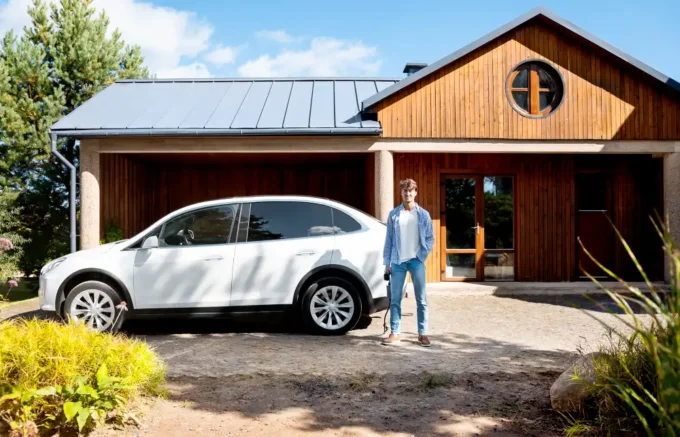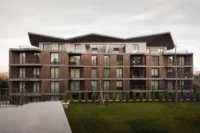As we embrace a more mobile lifestyle, the way we design our spaces needs to evolve. Mobile living isn’t just about tiny homes or RVs; it’s about creating versatile environments that adapt to our ever-changing needs. Whether we’re working remotely, traveling, or simply seeking flexibility, thoughtful design can enhance our experience and make life on the go more enjoyable.
In this article, we’ll explore innovative strategies for designing spaces that prioritize functionality and comfort while maximizing limited square footage. From multifunctional furniture to smart storage solutions, we’ll share insights that can transform any mobile living situation into a stylish and efficient haven. Join us as we dive into the essentials of designing for mobile living and discover how to create a home that travels with us.

Understanding Mobile Living
Mobile living represents a transformative approach to how we inhabit spaces. By integrating functionality, comfort, and style, we create environments that enhance our mobile lifestyle.
Definition and Importance
Mobile living refers to the ability to live and work in flexible, portable environments, such as tiny homes, RVs, and adaptable workspaces. This lifestyle emphasizes portability, sustainability, and multifunctionality. The importance of mobile living lies in its adaptability to our increasingly dynamic lives. Design strategies that prioritize these features allow us to maximize space while maintaining comfort and efficiency.

Emerging Trends in Mobile Living
Emerging trends in mobile living shape how we design our spaces. Key trends include:
- Sustainable Materials: We increasingly use eco-friendly materials in construction and furnishings, reducing our carbon footprint.
- Smart Technology: Integrating smart home devices enhances convenience and automation, making mobile living more efficient.
- Multi-Functional Spaces: Designing areas that can serve multiple purposes, such as a living room that transforms into a workspace.
- Open Floor Plans: Open layout designs promote flexibility and a sense of spaciousness in limited square footage.
- Portable Furniture: We utilize lightweight, foldable furniture to adapt our spaces for various activities and needs.
These trends highlight the evolution of mobile living and guide our efforts in creating functional and stylish environments.
Key Principles of Designing for Mobile Living
Designing for mobile living incorporates essential principles aimed at maximizing functionality and comfort in limited spaces. We focus on flexibility, adaptability, and space optimization to improve the mobile lifestyle experience.

Flexibility and Adaptability
Flexibility allows spaces to evolve based on our changing needs. Adapting environments for multiple functions increases their utility. For instance, collapsible tables serve as workspaces by day and dining areas by night. Modular furniture enhances this adaptability, letting us rearrange components as desired. Incorporating adjustable shelving creates dynamic storage options, allowing us to customize layouts quickly for various tasks. Such design considerations ensure our mobile living conditions remain practical regardless of daily activities.
Space Optimization Techniques
Space optimization techniques enhance the functionality of compact environments. Prioritizing multi-functional furniture, such as sofas that convert into beds, maximizes limited floor areas. Utilizing vertical space with tall bookshelves or wall-mounted storage systems reduces clutter and enhances organization. Implementing built-in storage solutions beneath beds or seating effectively maximizes every inch of space. Smart technology, like app-controlled lighting and climate systems, can also contribute to streamlined space management. These strategies collectively transform mobile living areas into organized, efficient, and versatile homes.
Innovative Solutions in Mobile Living Design
Innovative solutions redefine mobile living, making spaces more functional and comfortable. We explore modular furniture options and smart home technologies as two key areas enhancing mobile living design.

Modular Furniture Options
Modular furniture offers flexibility and adaptability for mobile living. We benefit from pieces that can be reconfigured based on specific needs, such as sectional sofas that transform into beds or tables with adjustable heights. Popular options include:
- Stackable chairs: They save space when not in use and provide extra seating when needed.
- Foldable tables: They easily transition from a compact size for daily activities to larger configurations for gatherings.
- Modular shelving: This versatile storage system can expand or contract to fit various room sizes and styles.
Modular furniture not only improves space efficiency but also accommodates changing lifestyles, enhancing the mobile living experience.
Smart Home Technologies
Smart home technologies significantly enhance comfort and convenience in mobile living environments. We leverage these devices to create a seamless, tech-enabled lifestyle, such as:
- Smart lighting: Adjustable lighting systems allow for customized ambiance and energy savings.
- Smart thermostats: These technology-driven devices optimize heating and cooling, ensuring comfort while minimizing energy use.
- Voice-activated assistants: They streamline daily tasks, control other smart devices, and provide convenience in compact spaces.
By integrating smart home technologies, we transform mobile living into an efficient, modern lifestyle, ensuring that our homes remain both functional and enjoyable.
Challenges in Designing for Mobile Living
Designing for mobile living presents unique challenges that require a careful approach. We face obstacles such as limited space and the need for user-centric designs to enhance functionality and comfort.

Space Constraints
Space constraints are a primary challenge in mobile living. We frequently encounter compact environments where maximizing every square inch is essential. Strategies include:
- Multi-functional Furniture: Furniture like sofa beds and convertible tables serve dual purposes, minimizing space usage.
- Vertical Storage Solutions: Utilizing wall-mounted shelves and cabinets helps us take advantage of vertical space, creating more room for movement.
- Built-in Storage: Custom built-ins, such as under-bed drawers and recessed shelving, optimize storage while keeping living areas tidy.
These techniques not only boost functionality but also contribute to a more organized and visually appealing mobile space.
User-Centric Design Considerations
User-centric design considerations are crucial in mobile living. We prioritize the needs and habits of individuals who inhabit these spaces. Key factors include:
- Adaptability: Designing flexible areas that adapt to various activities, such as work, leisure, and socializing, enhances usability. Modular furniture allows for quick reconfiguration based on the current needs.
- Comfort: Incorporating ergonomic elements like supportive seating and adjustable lighting fosters a welcoming environment. Adjustable desks and task lighting contribute to productivity and relaxation.
- Accessibility: Ensuring that all elements are easily accessible supports a seamless flow within smaller spaces. Clear pathways and accessible storage solutions improve overall user experience.
By focusing on user-centric design, we enhance the livability of mobile environments, ensuring they meet diverse lifestyle demands.
Conclusion
Evolving design strategies for mobile living require a focus on functionality, comfort, and style. Our approach involves integrating versatile environments that adapt seamlessly to various lifestyles, such as remote work configurations or travel setups. We emphasize thoughtful design choices that enhance the mobile living experience, transforming limited spaces into stylish and efficient homes through innovative solutions.
We understand that mobile living encompasses an array of emerging trends. Sustainable materials, smart technology, multifunctional spaces, open floor plans, and portable furniture shape the future of this lifestyle. These elements guide us in creating adaptable environments that prioritize portability and sustainability, catering to the needs of modern dwellers.
Implementing key principles, such as flexibility and space optimization, is crucial. Our designs evolve based on changing needs, utilizing features like collapsible tables and modular furniture. We maximize functionality with multi-functional furniture, vertical storage solutions, and built-in storage, enabling efficient use of compact areas. Smart technology plays a pivotal role in enhancing these designs, streamlining space management and fostering organized, versatile homes.
Furthermore, we tackle challenges in mobile living design by prioritizing user-centric considerations. Focusing on adaptability, comfort, and accessibility improves the livability of mobile environments. By addressing these elements, mobile living transforms into a modern lifestyle that balances efficiency with enjoyment.
- compact living solutions
- custom RV interiors
- design tips for RVs
- designing tiny homes
- efficient small space design
- functional small spaces
- mobile home makeover
- mobile lifestyle decor
- mobile living design
- portable space design
- portable space organization
- small space furniture ideas
- stylish mobile homes
- tiny home storage ideas
- tiny house interior design
















Leave a comment